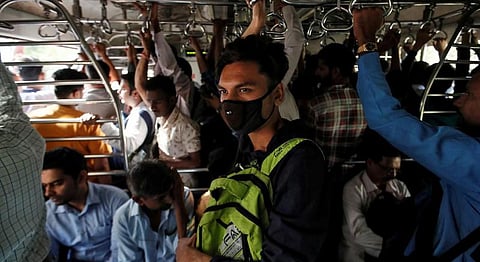
- HOMEGROWN WORLD
- #HGCREATORS
- #HGEXPLORE
- #HGVOICES
- #HGSHOP
- CAREERS
- ABOUT US
- CONTACT US

For the world’s second-most populous country with a greatly uneven healthcare system, a disease that spreads through respiratory droplets shed within 6 feet of proximity, the pandemic COVID-19 or Coronavirus stands as a pretty tricky situation. As of March 01, 167 travellers had been quarantined upon landing in Mumbai since January, nine amongst them being admitted to isolation wards. As of March 07, India reported 34 cases with three more cases — two from Ladakh and one from Tamil Nadu. Today, as on March 08, the number has risen to 40. According to the Ministry of Health and Family Affairs, as of March 12, there are 73 confirmed cases of COVID-19.On January 30, India’s first case was confirmed in Kerala in a student who had returned from Wuhan University. Since then, different Indian cities like Delhi, Gurgaon, Hyderabad, Bangalore, and Jaipur amongst others have reported cases. 16 people out of a group of Italian tourists quarantined in India have tested positive for the disease. The WHO announced on March 11, since the number of cases being reported worldwide is large enough, COVID-19 can be categorized as a global pandemic.
The BBC reports, “Health Minister Harsh Vardhan says India began screening people at airports from 17 January onwards, six days after Chinese state media reported the first known death from an illness caused by the virus and a good two weeks before the World Health Organization (WHO) declared it a global health emergency.” On March 03, Prime Minister Modi tweeted that having reviewed the situation of Coronavirus and the preparedness of India to deal with the global pandemic, he could assure citizens that there was no reason to panic. He urged the citizens to “take small yet important measures to ensure self-protection.” In efforts to alleviate the situation, a cluster-containment strategy similar to the models India has used to contain epidemics in the past is being adopted. The policy decisions regarding the pandemic are being taken by the Health Ministry and a team consisting of the ministry’s Emergency Medical Response Unit, the Central Surveillance Unit, the National Centre for Disease Control and technocrats, epidemiologists and directors from three notified hospitals in Delhi – All India Institute of Medical Sciences (AIIMS), Safdarjung Hospital and Ram Manohar Hospital. AIIMS has been asked by the government to designate part of the new emergency wing for setting up isolation beds.
Despite all of this, when we talk about India, the fact that we have an extremely uneven healthcare system with minimal accountability is undeniable. Atop this, our hygiene systems are also not exemplary and according to the Homeless World Cup Foundation, there are an estimated 1.8 million homeless people in India, with 52% based in urban areas. Even with a skewed reporting system in place, it is not difficult to imagine that only a very short percentage of people will be able to avail healthcare or be aware enough to report the symptoms if circumstances came to that. Since the incubation period is 14 days or more, screening upon arrival of tourists or Indian travellers isn’t so much of a foolproof solution either. Virologist Jacob John says that India will struggle to handle an outbreak. “We have not yet established a 21st-century health management system in the country, so we have the face the consequences of that gap,” he told Scroll.in. To this end, virologists are talking about an ‘Indian solution’ wherein effective methods of triage will ensure that milder infections are treated at home and hospitals are strictly reserved for patients in need of critically immediate care. Also recommended are emergency operations centres at the federal and state levels with special focus on states with weaker health systems.
For a country like India, while it is definitely difficult to mobilise effective control measures, it is not entirely impossible. Decentralisation of decisions, effective co-ordination, active surveillance and diagnoses, transparency in healthcare systems and micro-level management including efficacious awareness modules—that’s certainly the need of the hour.
For the minute-to-minute update, we suggest you follow news chains on ET, NYT and Al Jazeera, amongst other trustworthy sources.
If you liked this article, we suggest you read:
